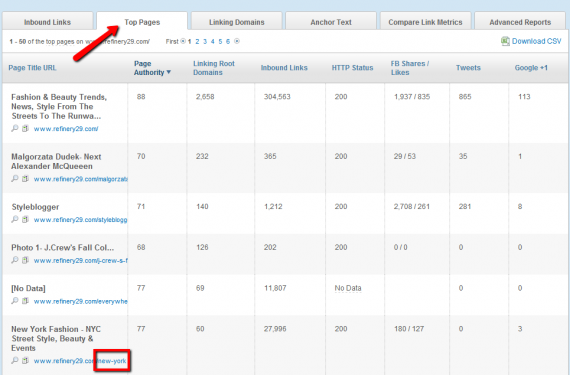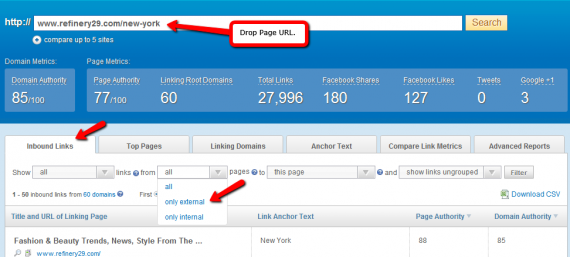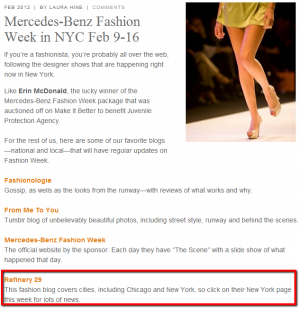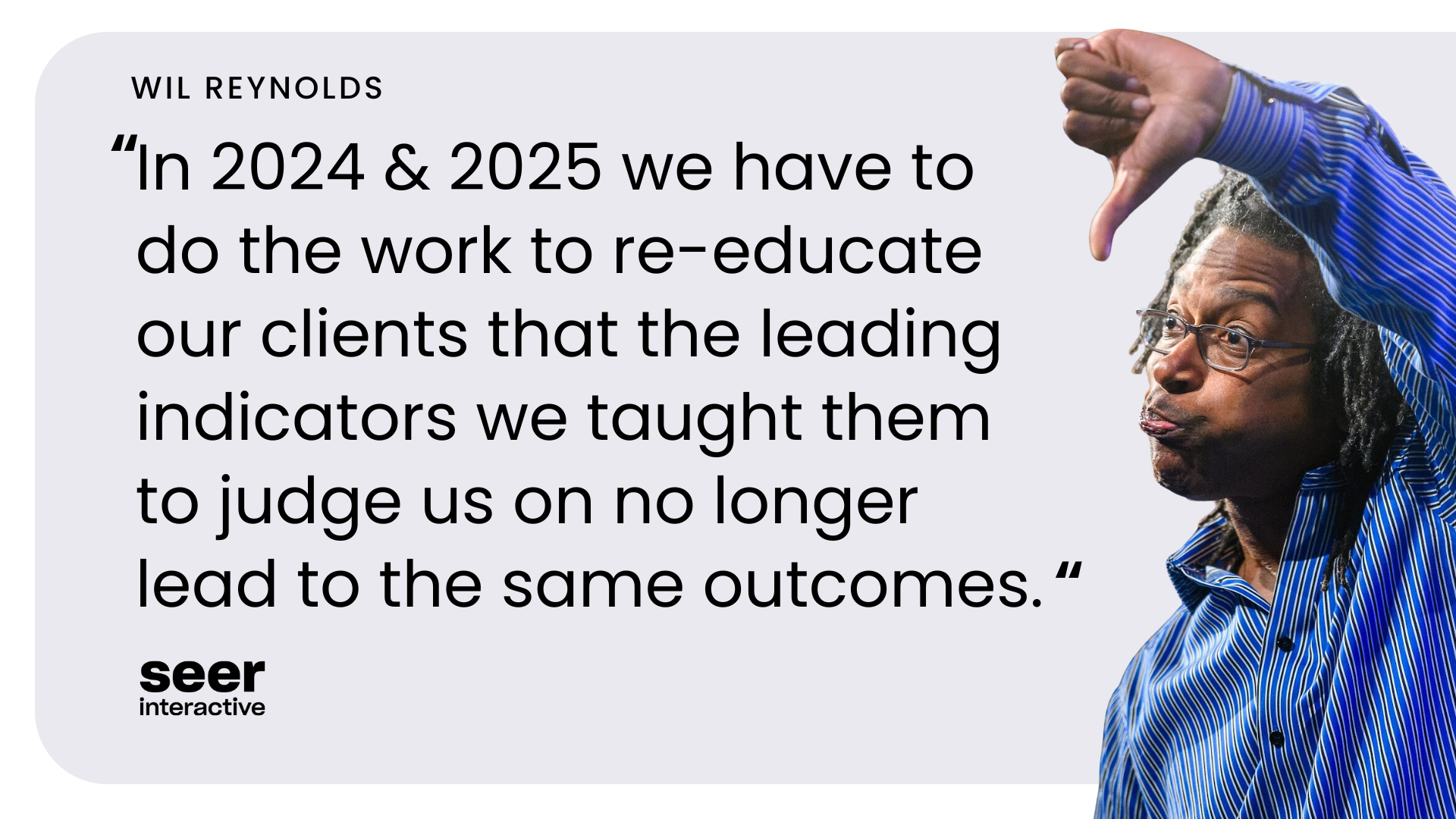Whenever content needs to be created, I explore beyond the notions existing within the creative trenches of my brain and check out what is working for the competition. Once I uncover strategies that are working for the sites ranking for my keyword of interest, I can create content inspired by them. If you mix proven success with an understanding what people are actually searching for your margin of failure shrinks substantially. Below is a 5 step process I like to go through to spark content ideas backed by results.
Step 1: Do a Google search for one of the keywords you want to rank for. (I am going to use fall accessories because that’s what was on my mind today before I started thinking about SEO).
I choose a site that is ranking in the top 10. If you notice an outlier (a site you can definitely compete against) take a look at that one.

Step 2: Open up the URL and drop it into Open Site Explorer
I take a minute to look at the domain authority and page authority of the site to get a feel for where my site stands among the competition. If you are beating out the competitor link and authority-wise but still not ranking, it is probably time to create some new content!

Step 3: Click on “Top Pages”
I take a quick look and see if anything stands out to me right off the bat. In this case, I see that one of the top pages on Refinery29 is city-specific. I am definitely going to want to dig deeper into the “New York” page to understand the strategy.

Sometimes as an SEO I get so caught up in what I am finding that I forget what the client is looking for. In an effort to stop this from happening, I keep the client in mind as I look through top pages. Plus, I know it is going to make it a lot easier to get buy in later if I focus on what is important to them. Here are a couple examples of how I might put this into action:
Scenario 1: My client is really adamant about both links and social shares.
When I look at the top pages I see a page titled “StyleBlogger” that has 2,708 Facebook shares and 261 Likes on Facebook. The page also has 281 tweets which is not groundbreaking, but substantial. Knowing that my client is into social shares I will definitely check out this asset and see what it is all about.


I notice that “StyleBlogger” is a contest to find the next big blogger. If I want to make the case as to why my client should invest in hosting this type of contest, I will highlight the success of Refinery29. Once plans of execution are being put in place, I can go through the back links to this page and the loyal Tweeters who shared this page and use that list for outreach. Thank you, Competitor.
Scenario 2: My client has not really established a social presence yet. The client is interested in building as many links to the site as possible and driving traffic to the site.
The New York page has close to 28,000 inbound links. I see that this fashion site is not only talking about clothing and accessories but has built out city-specific pages that have information about restaurants, nightlife and Events.

So THAT is probably how they are building a presence among city-specific communities. Of course I could simply tell the client that this is the case but it is not going to be half as convincing as showing the client how and from where the page is getting links.
If this city-specific content strategy makes it to the execution phase, understanding the competitor’s linking strategy will be super helpful during outreach planning. Thank you again, Competitor! You are so good to me!
Note: You can use Open Site Explorer to investigate external back links to a page. Simply drop the page URL into Open Site Explorer, select “only external” and “this page” then hit "filter".

Step 4: Grab screen shots of and take notes on a few examples of how the competition is getting links from their assets/content for your records.
Taking notes on how the competition is building links to pages will help you with your strategic linking plan down the road.

In the example above, as a result of Refinery29’s engagement with the NYC fashion community, they scored a mention and a link in an article talking about Mercedes-Benz Fashion Week in NYC.
Step 5: Have a beer.
I prefer IPA.
Well, there you have it. The competition can teach you a whole lot. If you take the time to understand how the winners are winning, you can create content with more confidence. Furthermore, if you use the competition’s success as proof that your strategies have potential, it will be much easier to get buy in from your client/decision maker. The most important takeaway here is not to steal ideas from your competitors but to become inspired and educated by their success.
Follow me on Twitter @Afreezee

